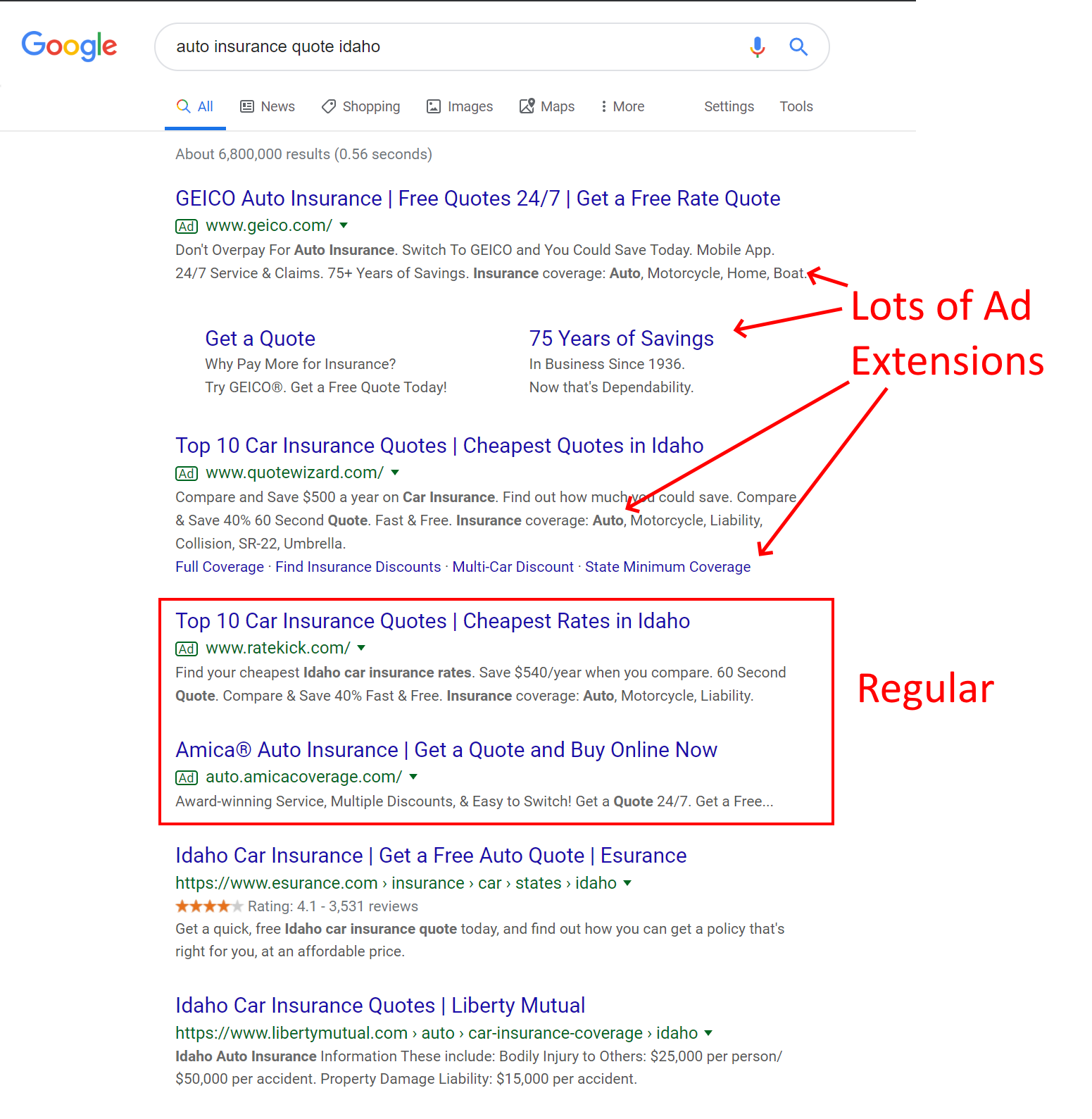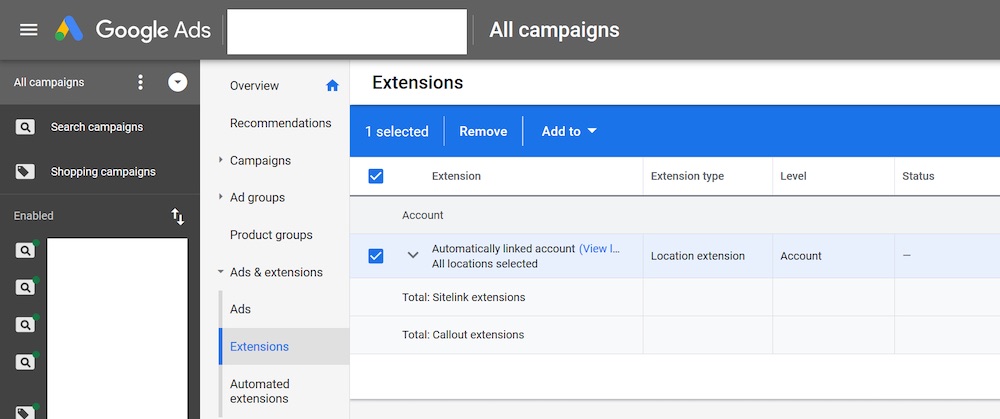A few weeks back I received an email from Google Ads with the subject line “Location Extensions will be activated in Google Ads.” I get many emails from Google. But even with a quick scan I could tell this was different: Google was going to add something unless I opted out.
If you have not connected your Google Ads account to a Google My Business location, Google will now link them if it detects a shared domain and country. Once linked, Google will show location extensions in your ads unless you instruct Google otherwise.
Google Ads’ Basics
Google Ads is a sophisticated platform with many features. Most advertisers are familiar with the basics of a search ad: headlines, description, and a URL. This is the standard format that we see on many Google search result pages.

“Regular” search ads include the basics: headlines, description, and a URL. Many ads, however, also include extensions.
The ads in the third and fourth positions above are regular text ads. They both feature two headlines (in large blue font with a pipe separating the two), a display URL (green text below the headlines, with a small “Ad” icon on the left), and description text (smaller black text).
But notice the ads in the first and second positions. They have supplemental elements called ad extensions.
Ad Extensions
The purpose of ad extensions is to improve relevance and performance by displaying additional info. The first ad in the example above, from Geico, has two expanded sitelinks ad extensions — “Get A Quote” and “75 Years of Savings.” Each is clickable and linked to a page on the site.
The second ad, from QuoteWizard, uses a variation of the sitelinks extension with four links in blue text: “Full Coverage,” “Find Insurance Discounts,” “Multi-Car Discount,” and “State Minimum Coverage.”
Both ads also have a structured snippet, another extension, which adds the types of insurance after the description text. For Geico this snippet reads “Insurance Coverage: Auto, Motorcycle, Home, Boat.”
However, neither ad contains a location extension, which is common for brick-and-mortar businesses.
The ad below appeared in my search results for “tire shop idaho falls.” My query indicated not only that I needed a tire shop but also which city. The ad contains a location extension (“265 Northgate Mile…”). But I didn’t necessarily need to include the desired place in my query, as location extensions often detect where a searcher is located based on his device, IP address, or other means.

This Big O Tires ad includes a location extension (“265 Northgate Mile, Idaho Falls, ID”) that links to Google Maps.
Note the small pin icon, above, to the left of the address, 265 Northgate Mile. This is the same pin as on Google Maps, which also contains the business’s address and hours of operation. The address on the ad is clickable and links to the Google Maps listing for the store.
A location extension helps promote a physical presence. But many ecommerce businesses have no physical stores. For them, it’s not helpful.
How to Stop
Google Ads’ deadline to opt-out of location extensions was November 25, 2019. To see the status of your account:
- Log in to Google Ads.
- Select “Ads & extensions” from the left navigation and then click “Extensions.”
- Next, filter by “Extension type” to show only location extensions.
- If Google created an automatic link, the message would read “Automatically linked account.”

Log in to Google Ads to see if Google automatically added a location extension to your account.
You can leave this alone if you desire a location extension in your ads. However, you can easily remove the location extension by checking the box on the left and “Remove” above it.

Remove the location extension by checking the box on the left and “Remove” above it.
Opt-in Only
I’m a control freak when it comes to digital advertising. I don’t like features being added without my knowledge or permission. So I don’t appreciate Google’s approach with location extensions. It should have been an opt-in item.





